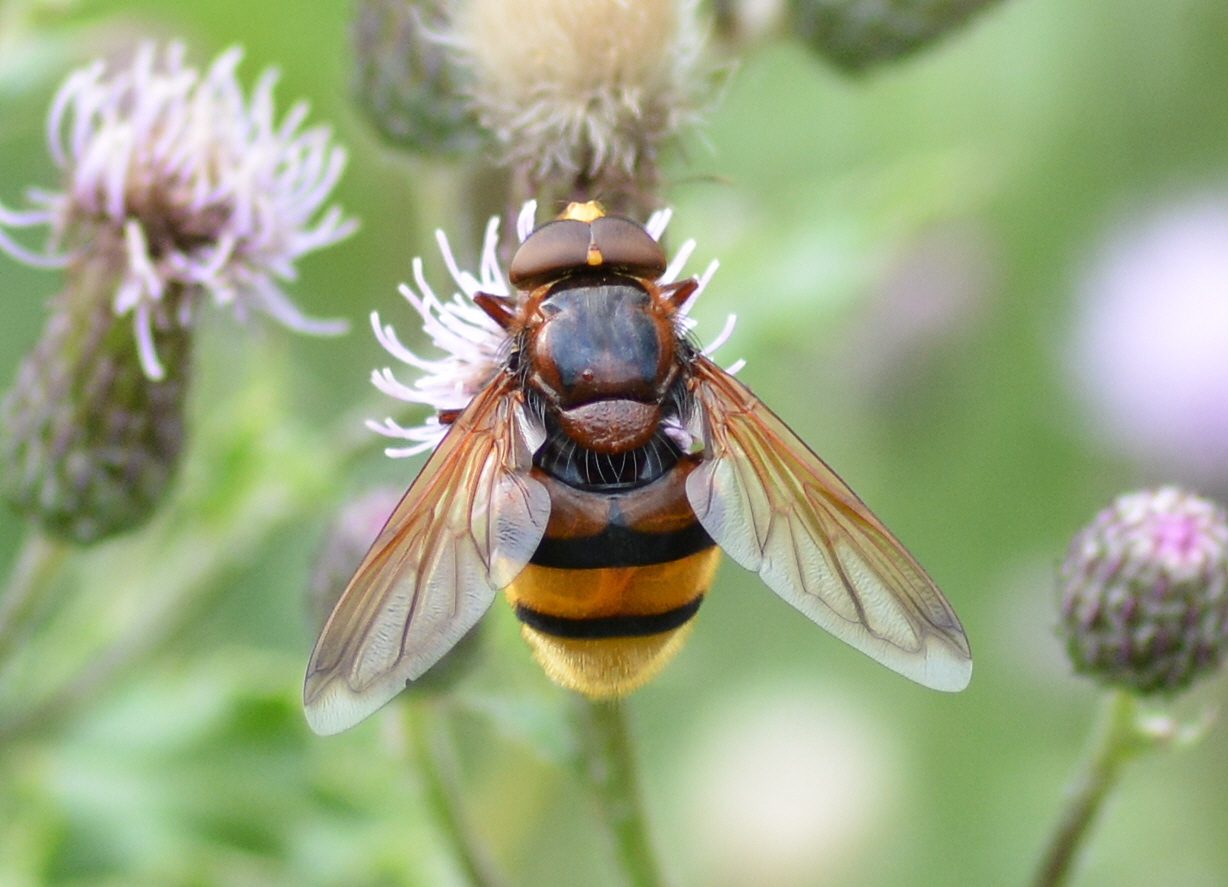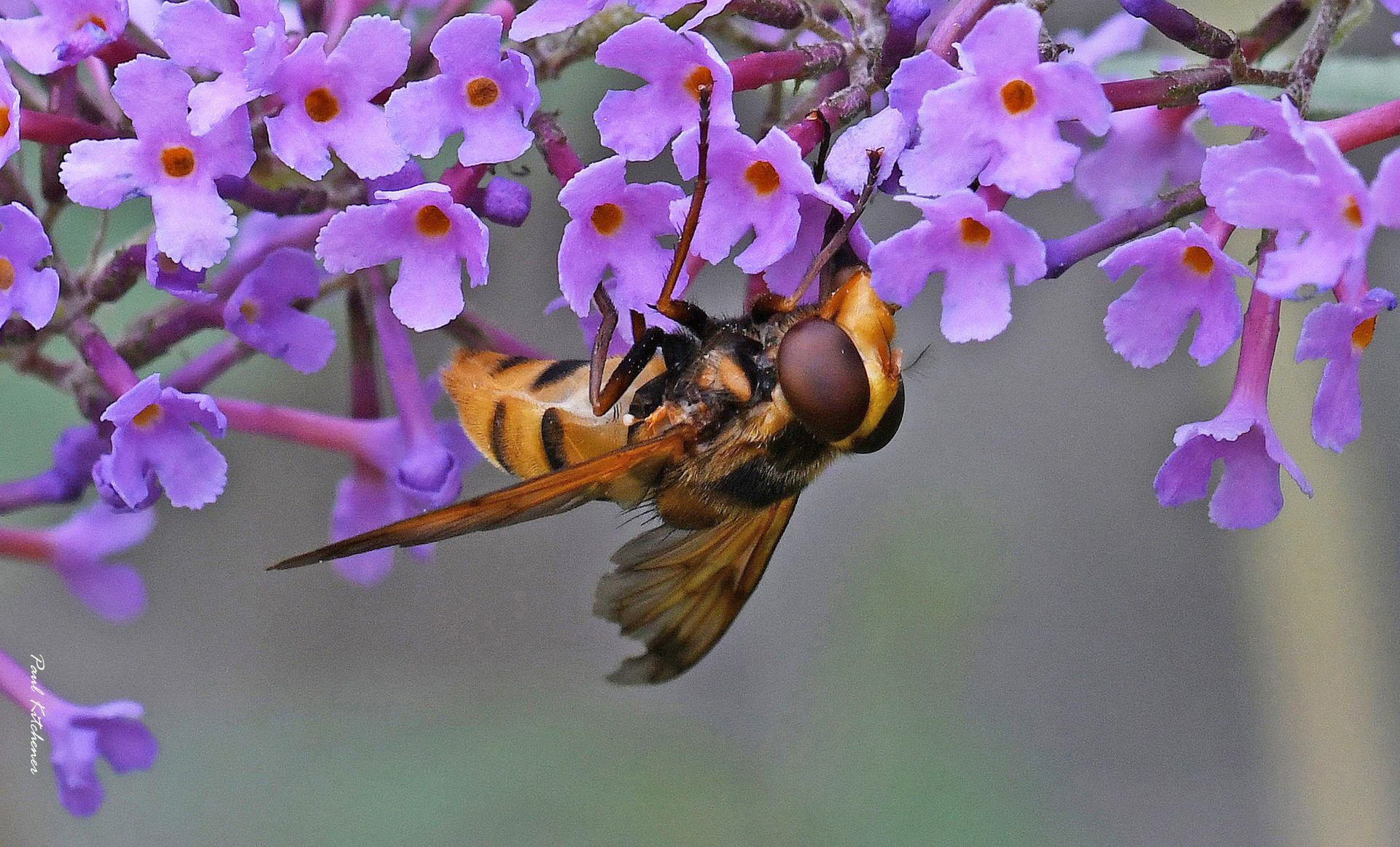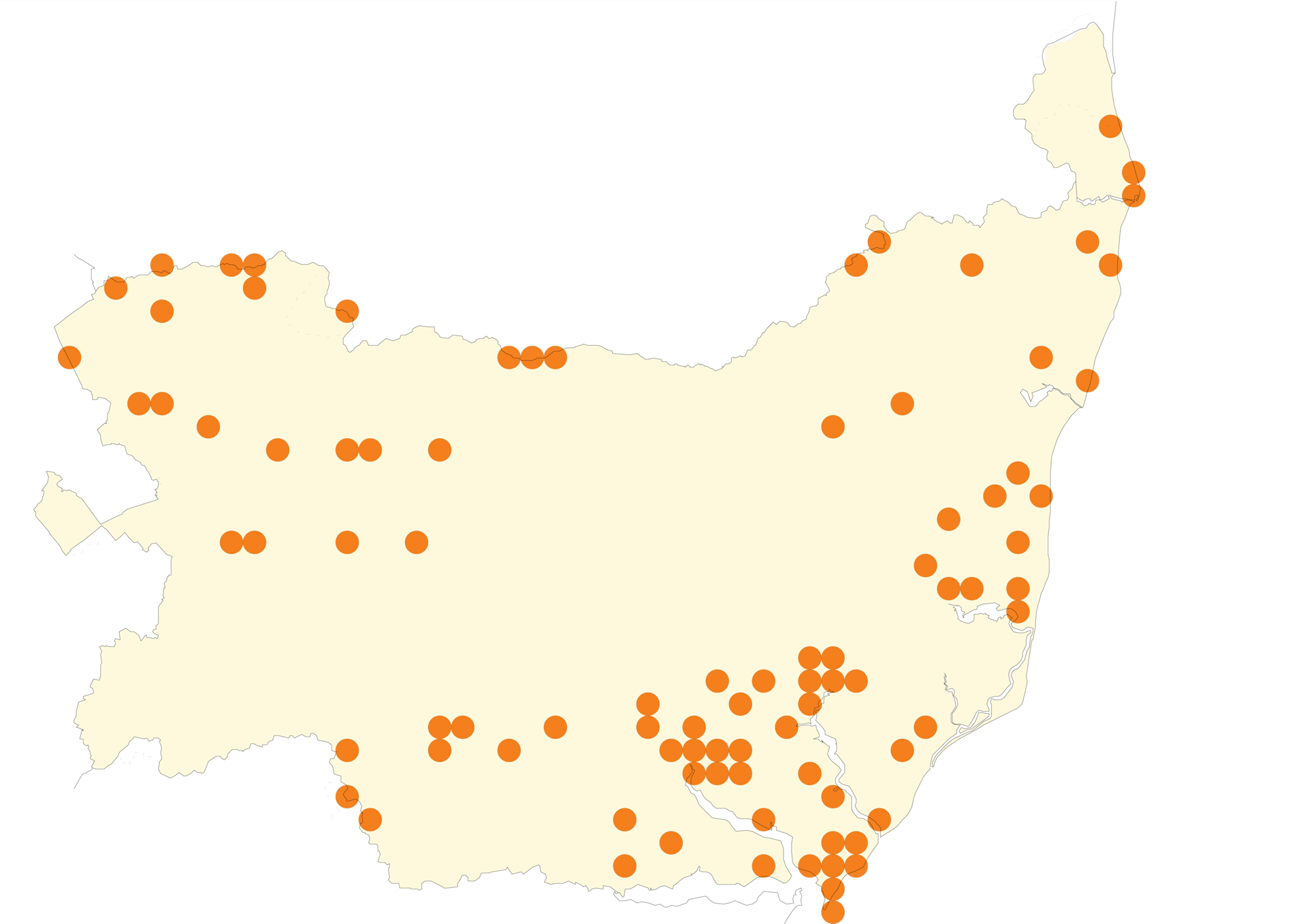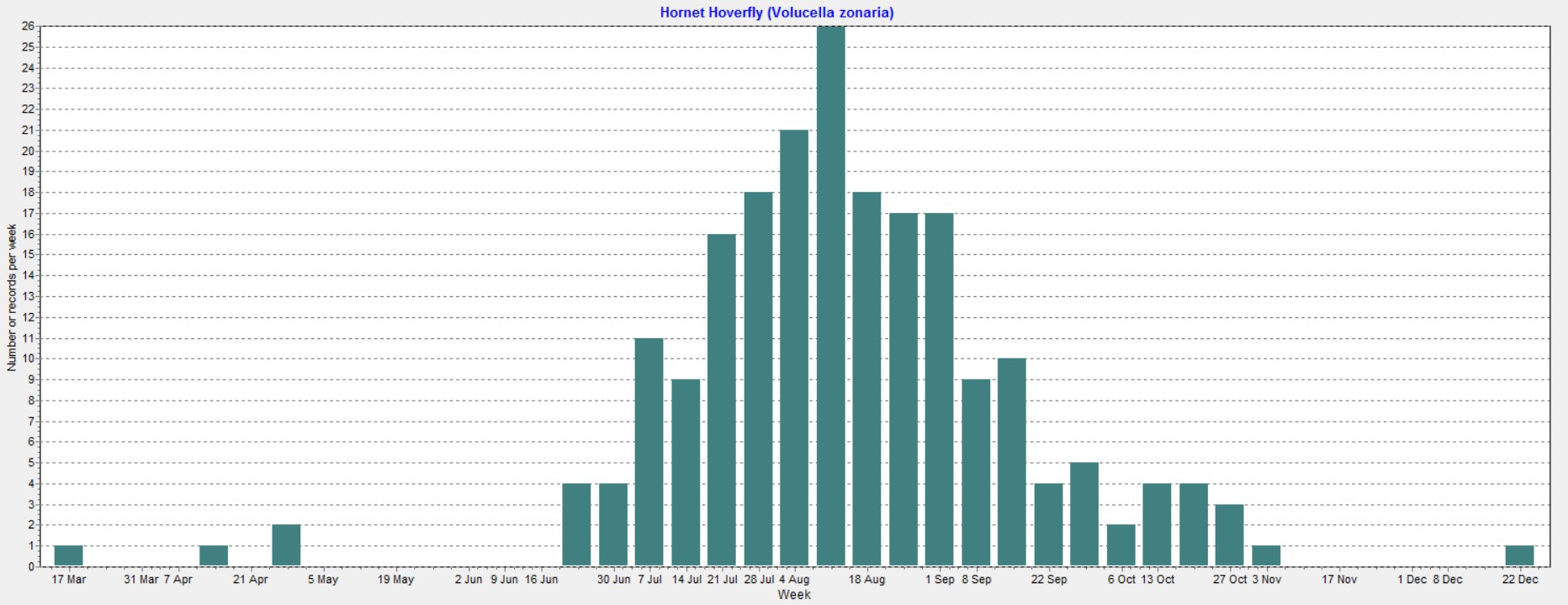These harmless flies, also known as the Belted Hoverfly, mimic the Hornet in size and appearance and even make a similar buzzing noise while flying.

© Alan Thornhill (Flickr)
Adults can reach 2.5 cm in length, with a wingspan of 40 mm. They are large, wide hoverflies with a reddish-brown shiny thorax. Their face is a waxy yellow, with tiny antennae. They have reddish, large oval compound eyes, and in the males’, they touch each other at the top of the head.
Their abdomen is reddish-yellow with two broad black bands and they have two transparent wings with amber-coloured veins. Their legs are black near the body, fading to brown.

© Paul Kitchener (Flickr)
Similarities:
- Large size approaching and 2.5cm long
- Dark chestnut thorax and distinct yellow ends to the abdomen
- Buzzing flight
- Brown wings
- Yellow front to the head
Differences Hornet Hoverflies have:
- Only two brown-black stripes
- Much larger eyes that touch at the top of the head in males
- Broad wings that are held at a distance from the body
- Tiny antennae, with Arista (a hair-like projection)
- No waist between the thorax and the abdomen
- Only one pair of wings
- No stinger!
The Wildlife Trusts have a useful identification page
Hornet
Hornet Hoverfly
Migration
Approximately four billion hoverflies travel to and from Britain every year. They are essential as critical pollinators, pest controllers, nutrient recyclers and crop protectors, and valuable food resources for birds, bats and other predators.

Distribution in Suffolk
A rare visitor to the country up to the 1940s, they have become more common in Southern England and are spreading northwards, perhaps due to climate change. They are particularly prevalent in urban areas.

Adults can be seen between May and October, with numbers in Suffolk peaking around mid-August.

Diet
Adult hoverflies rely on nectar and have mouthparts that dab like sponges. This means they prefer to visit flowers with an open bloom and easily accessible nectar and pollen, especially Valeriana, Oregano, Mentha longifolia, Scabiosa, Cornus, Ligustrum, Cirsium, Carduus, Buddleia and various other flowering shrubs. In addition, they carry and transfer pollen while foraging, sometimes for long distances during migration.
© Keith Gallie (Flickr)

Pollination
Migratory hoverflies are the second most important pollinators after bees. Although they are not as fluffy as bees, they do have tiny hairs covering nearly their whole body. Pollen grains stick to hairs and are transported and transferred from flower to flower very effectively.
© Martin Cooper (Flickr)
© Paul Kitchener (Flickr)
Spotting Hornet Hoverflies
They can be found in woodland edges, meadows close to woodland, hedgerows and, most often, gardens and urban areas. Adults can be seen between May and September, but they are most common in July and August.
If you are lucky enough to spot Hornet Hoverfly don't forget to record your sighting!
© Jano de Lille (Flickr)
Did you know
Hornet Hoverflies are capable of “buzz pollination”. By vibrating their bodies, they can release stubbornly attached pollen.
Watch a bumblebee demonstrate the art of Buzz Pollination.
